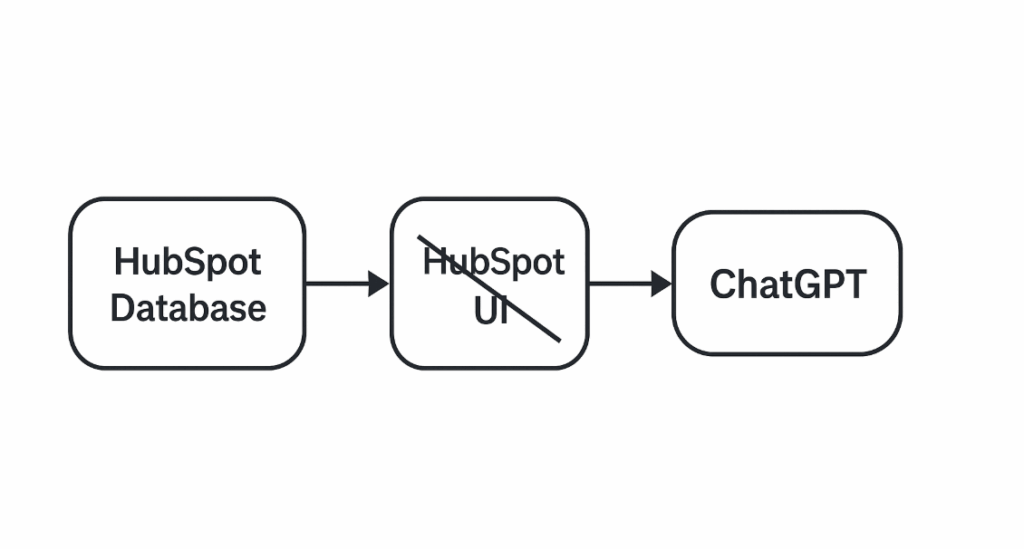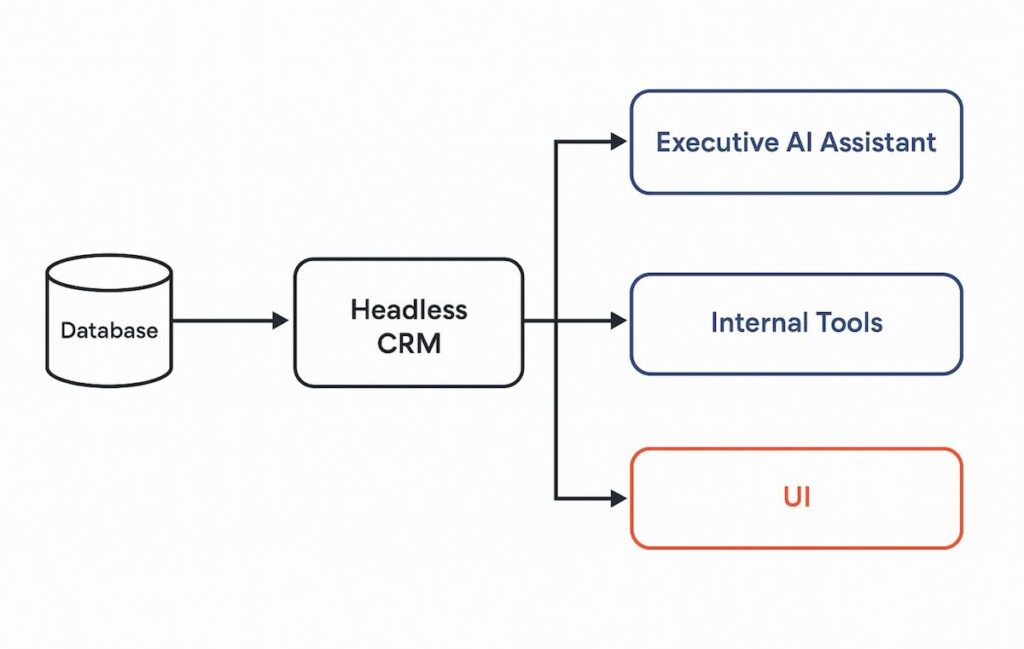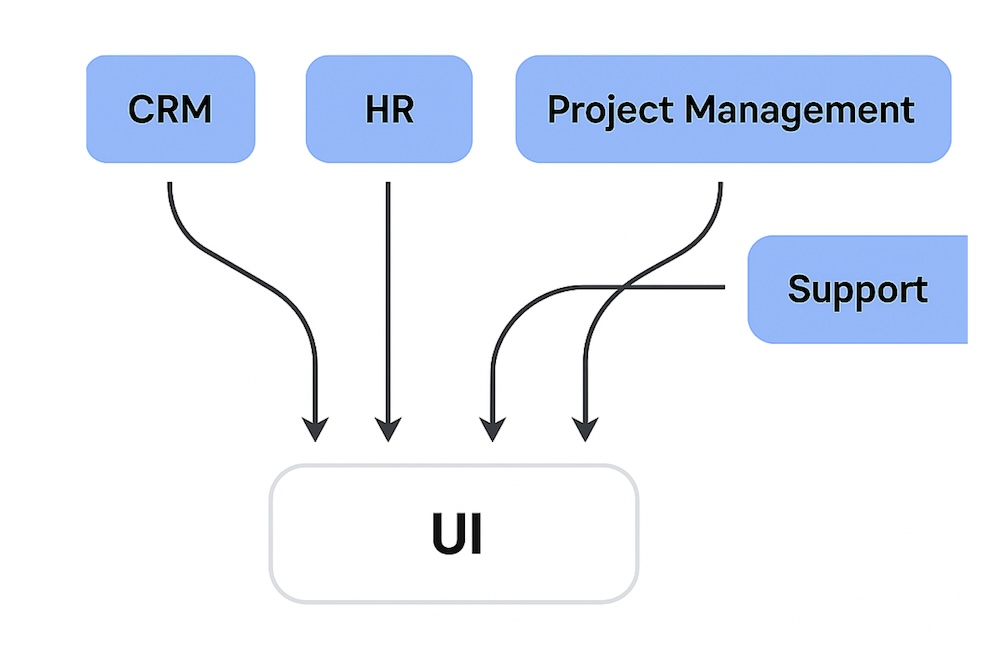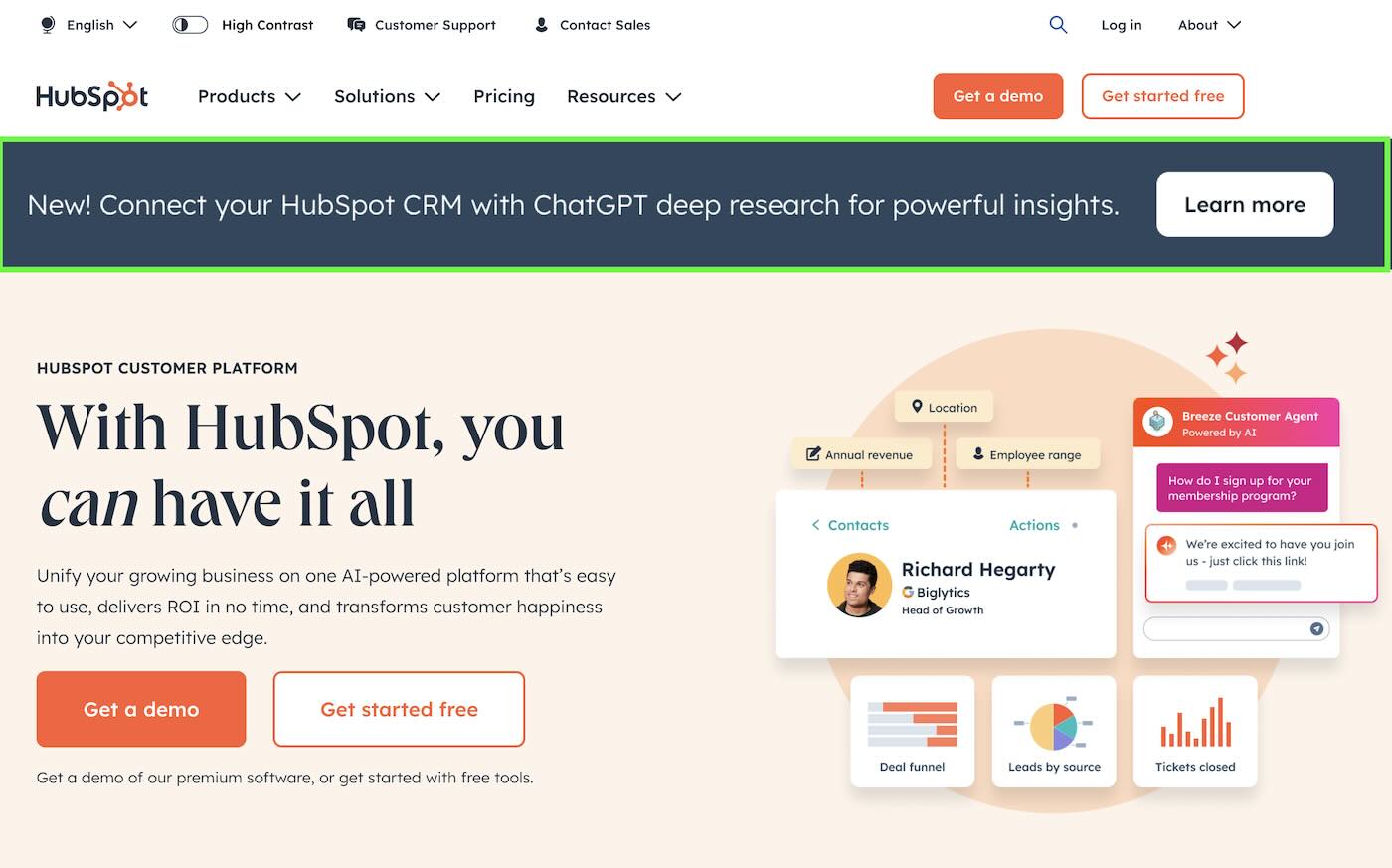I’ve been in SaaS for over two decades. I’ve seen it all—from duct-taped onboarding flows that accidentally convert, to UI tweaks that unlock $10M ARR bumps. But this? What HubSpot is doing right now is one of the biggest unspoken sins in SaaS: decoupling the user experience from the value layer.
They’re inviting customers to plug ChatGPT directly into their CRM. Sounds harmless. Feels smart. Probably even tested well. But if you’ve spent time inside billion-dollar SaaS companies, you know exactly where this leads:
You just trained your customer to stop logging into your product.
In SaaS, the UI isn’t just a skin. It’s your engagement layer, your onboarding loop, and your upsell engine. It’s the billboard and the highway. You don’t let someone else paint over it, and you definitely don’t tell your customer to bypass it entirely.

But that’s exactly what this “Connect your CRM to ChatGPT” push does. And it’s going to accelerate a shift the industry is absolutely not prepared for.
SaaS is About to Get Rewritten by Internal Tools
In the Bahamas last month, I sat with a CEO who built a thriving SaaS-like company at $10M ARR with 5 full-time employees and 50 AI agents. That ratio used to be laughable. Now it’s becoming default.
Instead of buying bloated tools, teams are wiring up:
- Internal databases
- Natural language interfaces
- Lightweight UIs powered by ChatGPT or Claude
They don’t need your dashboards. They want answers.
A recent case? Slack cutting off third-party access to its message history APIs. Why? Because customers were piping Slack data into their own internal copilots and skipping the product entirely. Slack saw the future—and yanked the cord.
And yet HubSpot just invited that future into their front door.
The Next Wave of SaaS Isn’t a Dashboard—It’s a Brain
Here’s the shift no one wants to say out loud:
Executives don’t want dashboards. They want decisions. They don’t want data. They want direction.

And now that tools like GPT-4o and Anthropic’s Claude can synthesize context, teams are replacing entire categories of SaaS with internal agents that operate on company data. No clicks. No screens.
Just “What do I need to know?”
Zapier’s CEO recently shared that enterprise customers are building GPT-powered Slack agents that automatically summarize pipeline risk across all deals—and output recommendations, not just data. That’s what SaaS used to do. Now companies are skipping the middleman and building the brain themselves.
If They Stop Logging In, You’re Not a Product—You’re an API
This is what makes HubSpot’s move so dangerous.
When your CMO hasn’t logged into the CRM in 3 months because ChatGPT does it better, the conversation isn’t “Which plan tier should we upgrade to?”
It quickly becomes…
“Why are we still paying for this?”
You’ve become a backend. A glorified structured database. And if you’re just an API, the pressure becomes:

“Can we rebuild this ourselves without all the unnecessary features we don’t use?”
“Can we swap this out for something cheaper if it’s just a back end database?”
“Can we train our own internal model directly on our raw customer data?”
And you better believe someone in the room will at least want to explore it. And that’s the first step towards churn.
So What Do You Do If You’re Building SaaS in 2025?
Here’s the truth: the SaaS model isn’t dying. But it is mutating—fast. And if you’re not adapting, you’re getting commoditized.
Here’s what forward-thinking founders need to do now:
- Own the interface. Never route core engagement through someone else’s product. Build the insight layer into your UI or risk becoming invisible.
- Think like an AI orchestrator. Don’t just be a system of record—become the system of reason. Bake in agents, recommendations, and automation before your customers do it without you.
- Design for executives. The future isn’t dashboards—it’s “give me the summary.” Design around the user who doesn’t want to click anymore. Build for the boss, not the analyst.
SaaS isn’t dead. But the passive, login-and-hope model is.
If your product isn’t smart, embedded, and essential—you’re building someone else’s roadmap for them.
